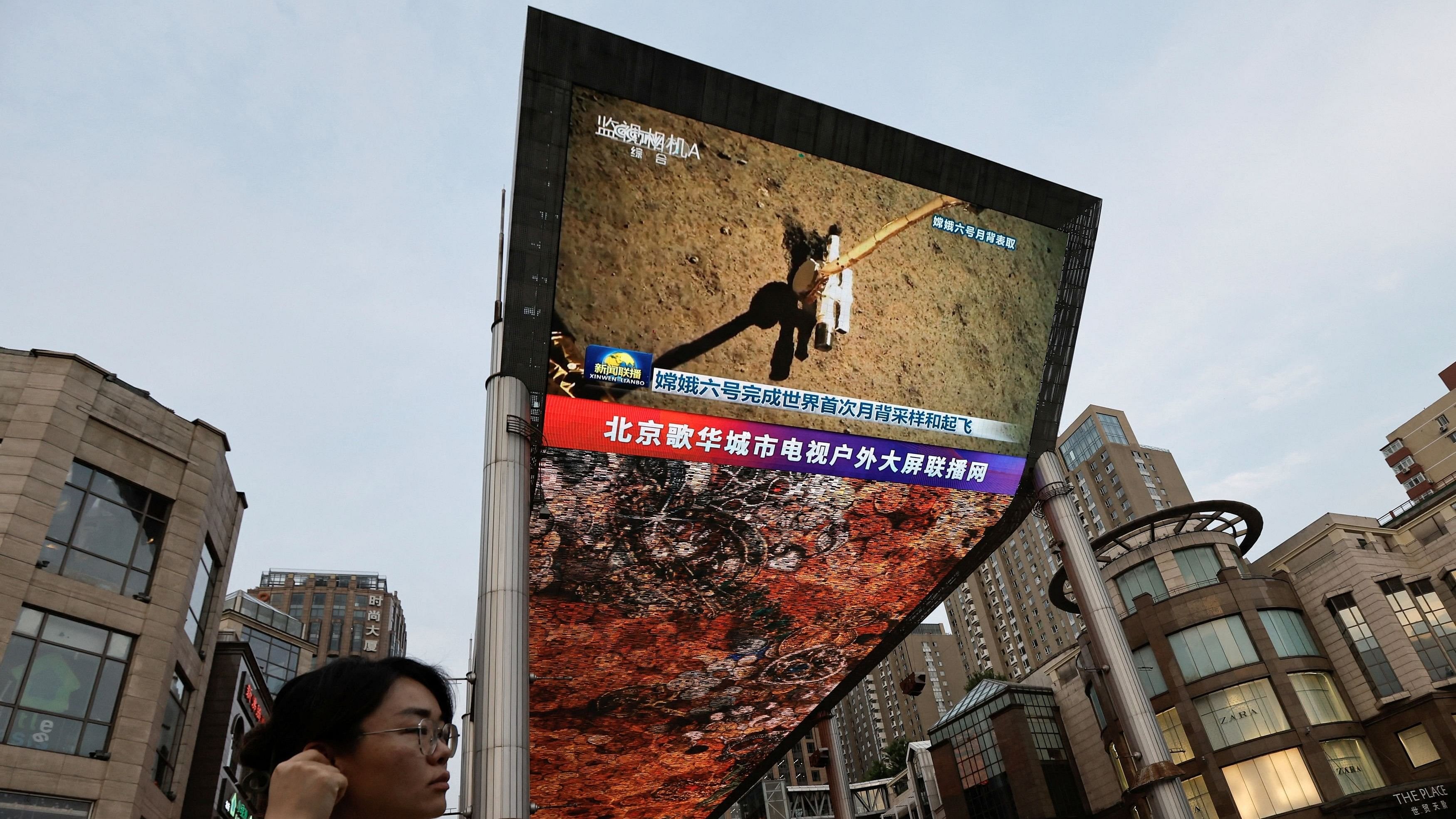
A large screen shows news footage of China's Chang'e-6 lunar probe collecting a samples from the far side of the moon in Beijing, China.
Credit: Reuters Photo
China has reached yet another milestone in space missions. In a breakthrough achievement, the country's Chang'e-6 lander scripted history by becoming the first spacecraft to collect and bring back samples from the other side of the moon - which remains hidden from the Earth's vision span.
Using a robotic arm and drill, the lander concluded a two-day operation by gathering rock particles and dirt from the 2,500 km-wide South Pole-Aitken (SPA) basin— one of the most ancient and largest lunar craters, as per a report by The Indian Express. Chang'e-6 had descended on the Moon's surface on June 1.
Following this, the Chang'e-6 initiated an ascent module to deliver the collected samples to its orbiter hovering around the moon. A service module released by the orbiter then transported the precious samples back to the earth on June 21.
Despite all the challenges, another lander from China— the Chang'e-4 was able to successfully land its Yutu-2 rover on the far side of the moon in 2019. Chang'e-6 has now one-upped its predecessor in addition to having touched down on the difficult terrains of the far side of the moon, it has also brought back valuable samples from its surface.
How important is the success of this mission?
The goal of any sample return mission, like the one in case of Chang'e-6, is to gather samples and successfully transport them back to the Earth from sites such as the moon or the Mars, so that they can be carefully examined and analysed.
Rovers, orbiters, and landers are used to conduct experiments in space or on celestial planets in case of in-situ robotic expeditions. However, the scope and spectrum of analysis are limited in these cases, since they can only carry tiny, imprecise sensors. They are unable to establish the age or place of origin of a rock.
But if the samples can be brought back home, researchers can use powerful and sophisticated lab equipment to analyze them.
According to a January 2020 letter from Lori S. Glaze, the director of NASA's planetary science division, researchers can examine the "chemical, isotopic, mineralogical, structural, and physical properties of extraterrestrial samples from the macroscopic level down to the atomic scale, frequently all on the very same sample".
The lunar far side differs in many ways from the side facing the Earth, a greater number of craters, a much thicker crust, and lesser number of plains where lava flowed.
Till now, scientists are unsure of the reasons behind the stark differences between the two sides of the moon. Now, a closer look at the samples salvaged by Chang'e-6 may provide insight and shed significant light on the geological nature of the moon.